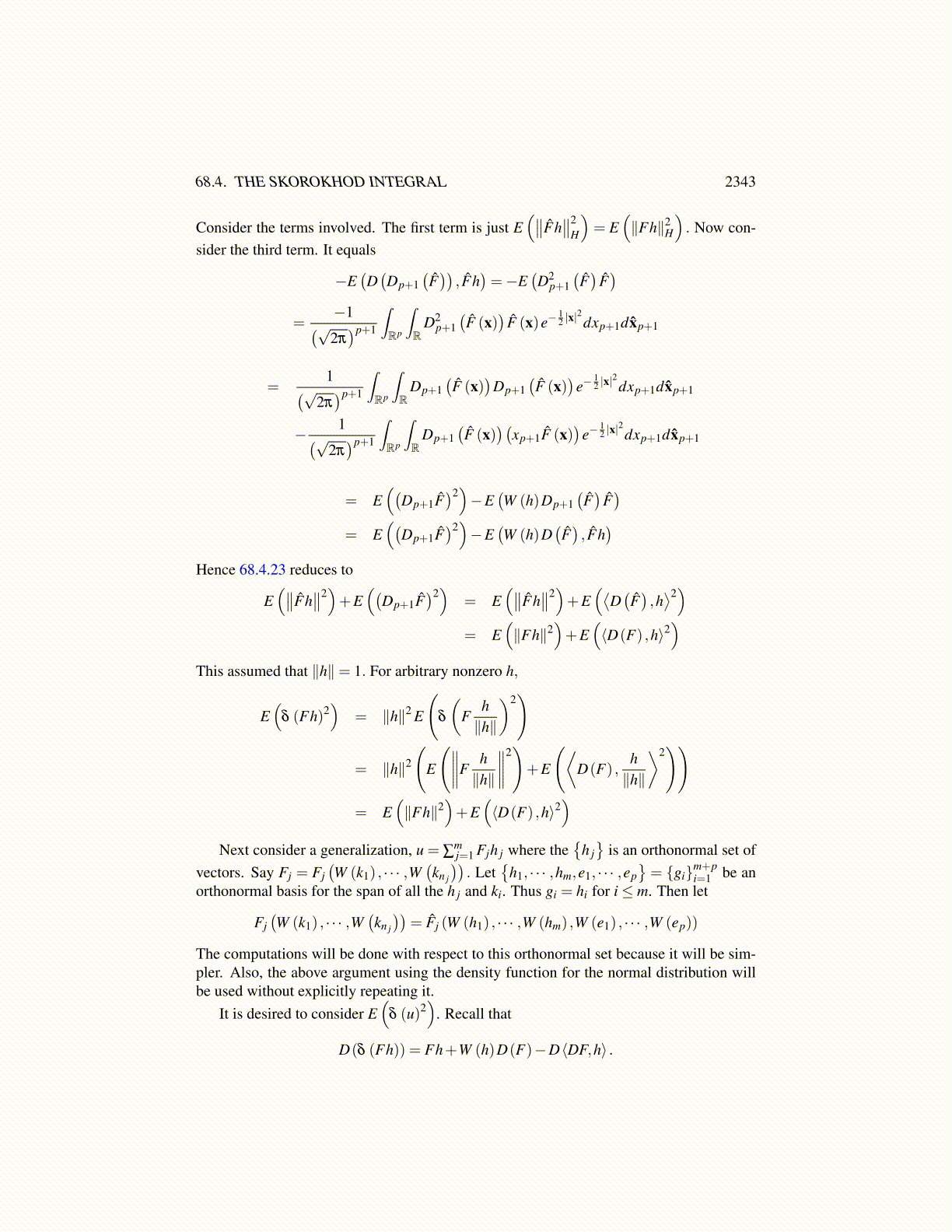
68.4. THE SKOROKHOD INTEGRAL 2343
where G = G(W (k1) , · · · ,W (kp)) and for simplicity, ∥h∥H = 1.Consider the vectors
{h,h1, · · · ,hn,k1, · · · ,kp
}. Starting with the left and moving to-
ward the right, delete vectors which are dependent on the preceding vectors, obtaining alinearly independent set of vectors which includes h. Then let
{h,e1, · · · ,eq
}be an or-
thonormal basis having the same span as the original vectors{
h,h1, · · · ,hn,k1, · · · ,kp}
.Then from the fact that W is linear, there are smooth functions having polynomial growthĜ, F̂ such that
G(W (k1) , · · · ,W (kp)) = Ĝ(W (h) ,W (e1) , · · · ,W (eq))
F (W (h1) , · · · ,W (hn)) = F̂ (W (h) ,W (e1) , · · · ,W (eq))
Note that hi = ∑qj=1 (hi,e j)e j +(hi,h)h. Thus
F (W (h1) , · · · ,W (hn)) =
F
(W
(q
∑j=1
(h1,e j)e j +(h1,h)h
), · · · ,W
(q
∑j=1
(hn,e j)e j +(hn,h)h
))
= F
(q
∑j=1
(h1,e j)W (e j)+(h1,h)W (h) , · · · ,q
∑j=1
(hn,e j)W (e j)+(hn,h)W (h)
)and so, D1F̂ is given by
D1F̂ =n
∑i=1
Di (F (W (h1) , · · · ,W (hn)))(hi,h)
Then by Lemma 68.4.2
E ⟨DG,F (W (h1) , · · · ,W (hn))h⟩= E⟨DĜ, F̂h
⟩= E
⟨D1(Ĝ)
h+q
∑k=1
Dk(Ĝ)
ek, F̂h
⟩= E
(D1(Ĝ)
F̂)
=1(√
2π)q+1
∫Rq
∫R
D1Ĝ(x) F̂ (x)e−12 |x|
2dx1dx̂1
=−1(√2π)q+1
∫Rq
∫R
Ĝ(x)D1
(F̂ (x)e−
12 |x|
2)
dx1dx̂1
=−1(√2π)q+1
∫Rq
∫R
Ĝ(x)((
D1F̂)(x)e−
12 |x|
2− F̂ (x)x1e−
12 |x|
2)
dx1dx̂1
= E((
F̂W (h)−D1F̂)
Ĝ)= E
((FW (h)−
n
∑i=1
Di (F)(hi,h)
)G
)Thus Fh ∈ D(δ ) and
δ (Fh) = FW (h)−n
∑i=1
Di (F)(hi,h)